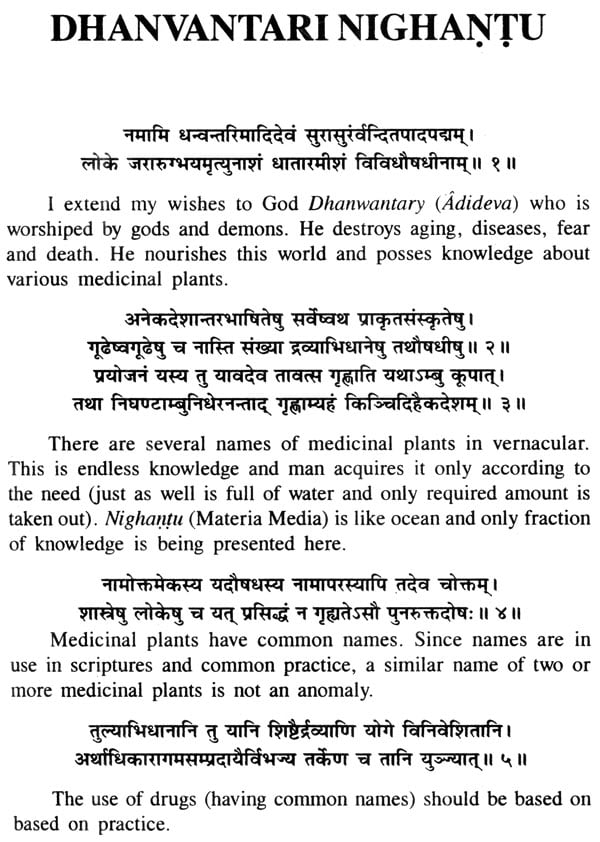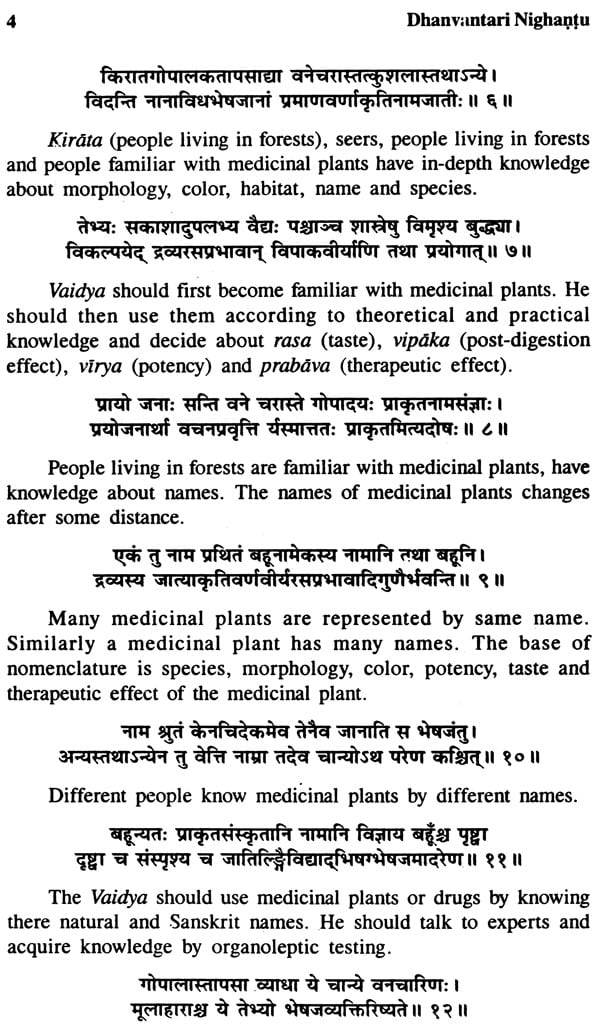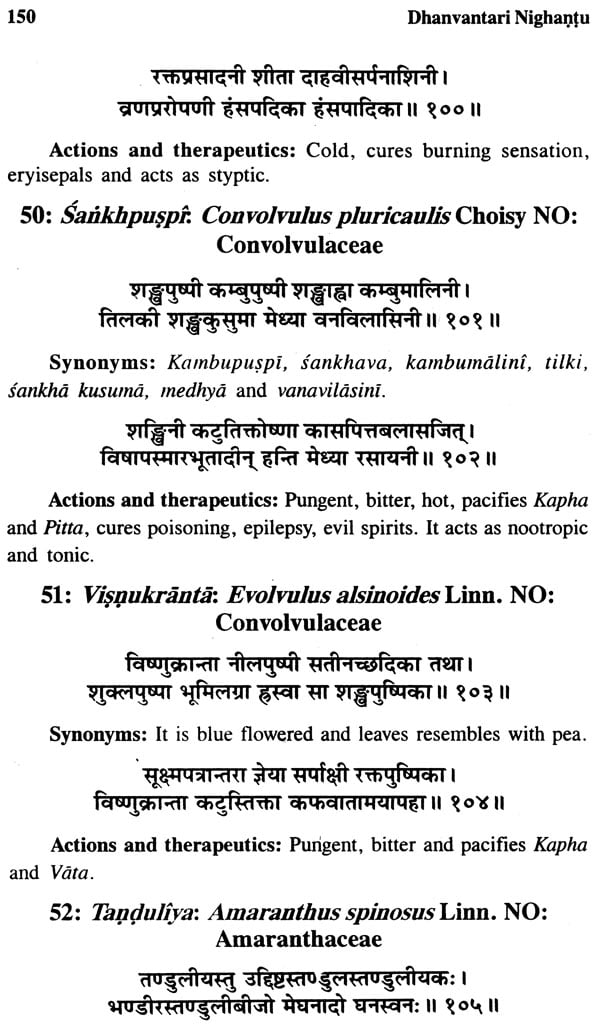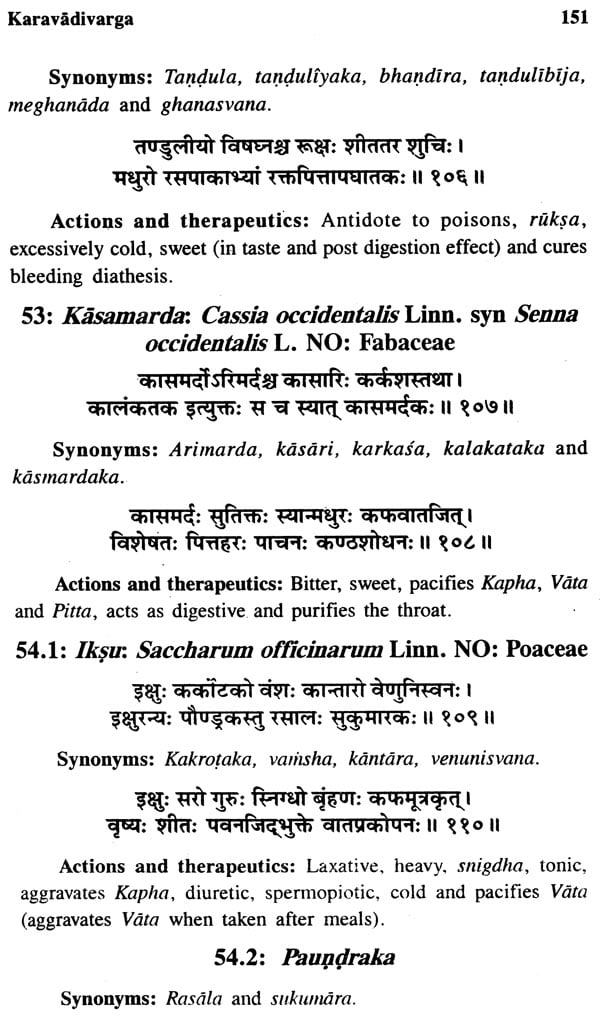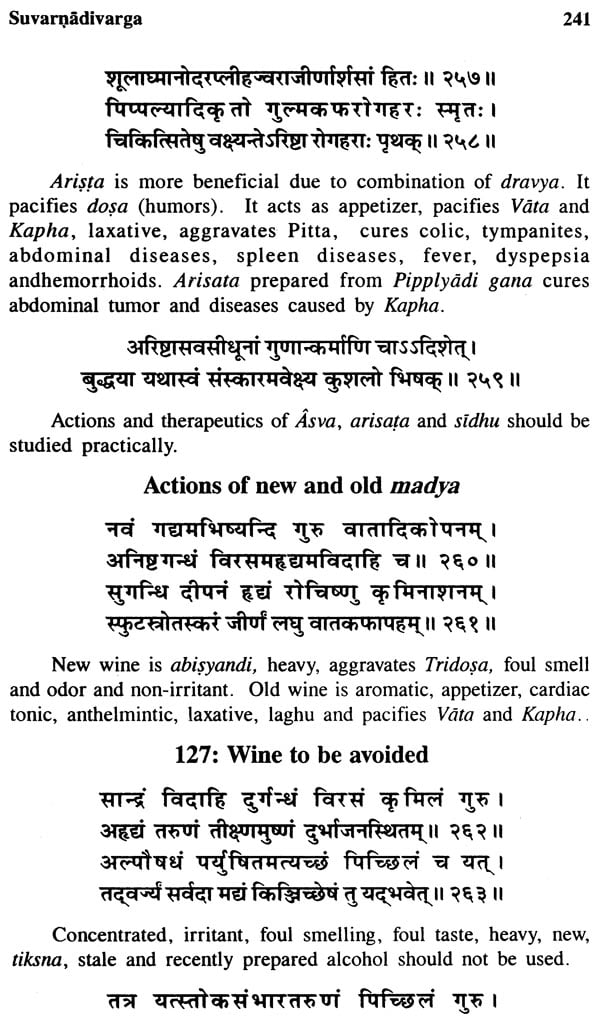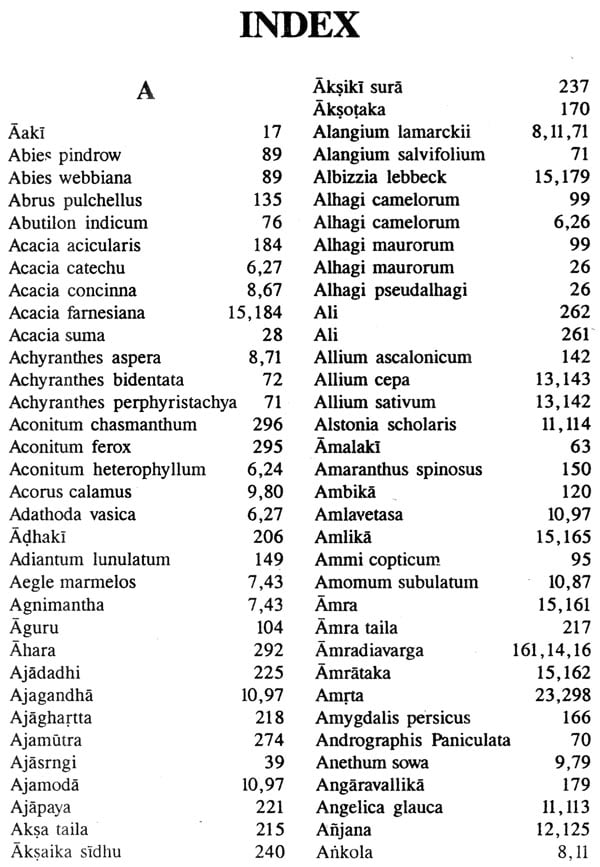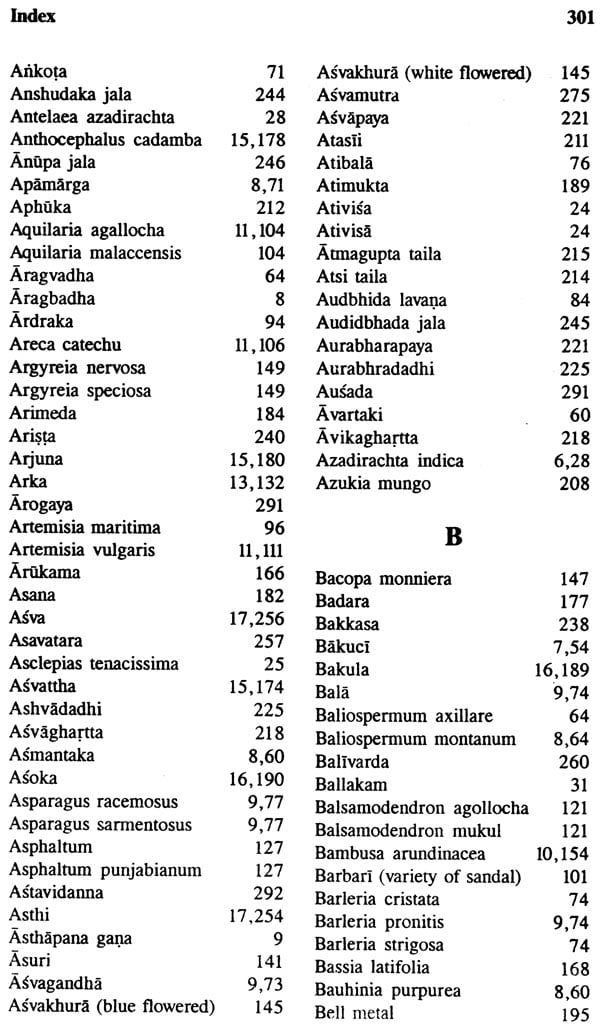
Dhanvantari-Nighantu (Sanskrit Text with English Translation)
Book Specification
| Item Code: | NAQ723 |
| Author: | Dr. Amritpal Singh |
| Publisher: | CHAUKHAMBHA ORIENTALIA, Delhi |
| Language: | Sanskrit Text With English Translation |
| Edition: | 2008 |
| ISBN: | 8189469126 |
| Pages: | 323 |
| Cover: | HARDCOVER |
| Other Details | 9.00 X 5.50 inch |
| Weight | 500 gm |
Book Description
Lord Dhanvantari is outstanding personality in history of Ayurveda. He was pioneer of Ayurvedic sciences. He was physician of the gods and at the same time, an excellent surgeon. Just like other Samhita, work done by Lord Dhanwantri in Ayurvedic Medicine is documented in Dhanvantari Nighantu.
Lord Indra deputed Dhanwantri to take this science to the mortals. It is said that when the ocean was churned by the gods and demons in search of the elixir of life, Dhanwantri came out of it holding the bowl of nectar in his hands. Sushruta, the great Indian surgeon, was disciple of Lord Dhanwantn.
Dhanwantri Nighantu, when it was composed, is still to be traced. However, it can be said with certainty that Dhanwantri Nighantu is principle text of Ayurveda as far as description of medicinal plants is concerned. The plant have been arranged in distinct seven groups
1. Guducyadivarga
2. gatapuspadivarga
3. Candanadivarga
4. Karaviradivarga
5. Amaradivarga
6. Suvaranadivarga
7. Migrakadivarga
Medicinal plants mentioned in seven groups have been discussed with respect to synonyms, Ayurvedic pharmacology, and action on three biological homours, actions and therapeutics. A complete chapter has been devoted to study of metals. While carrying out English translation of the ancient text, we have tried to include botanical names and natural order along with principle Sanskrit name of the medicinal plant. Same is applicable to description of metals and drugs of animal origin. Modern equivalent of disease pattern described in Ayurveda have been mentioned for reader's benefit.
Hope this work will be useful for Ayurvedic practitioners and researchers. This book in no way can replace other scholarly publications on Dhanwantn Nighantu but will be useful addition to old literature. Suggestions from experts and readers are welcome.
**Contents and Sample Pages**

